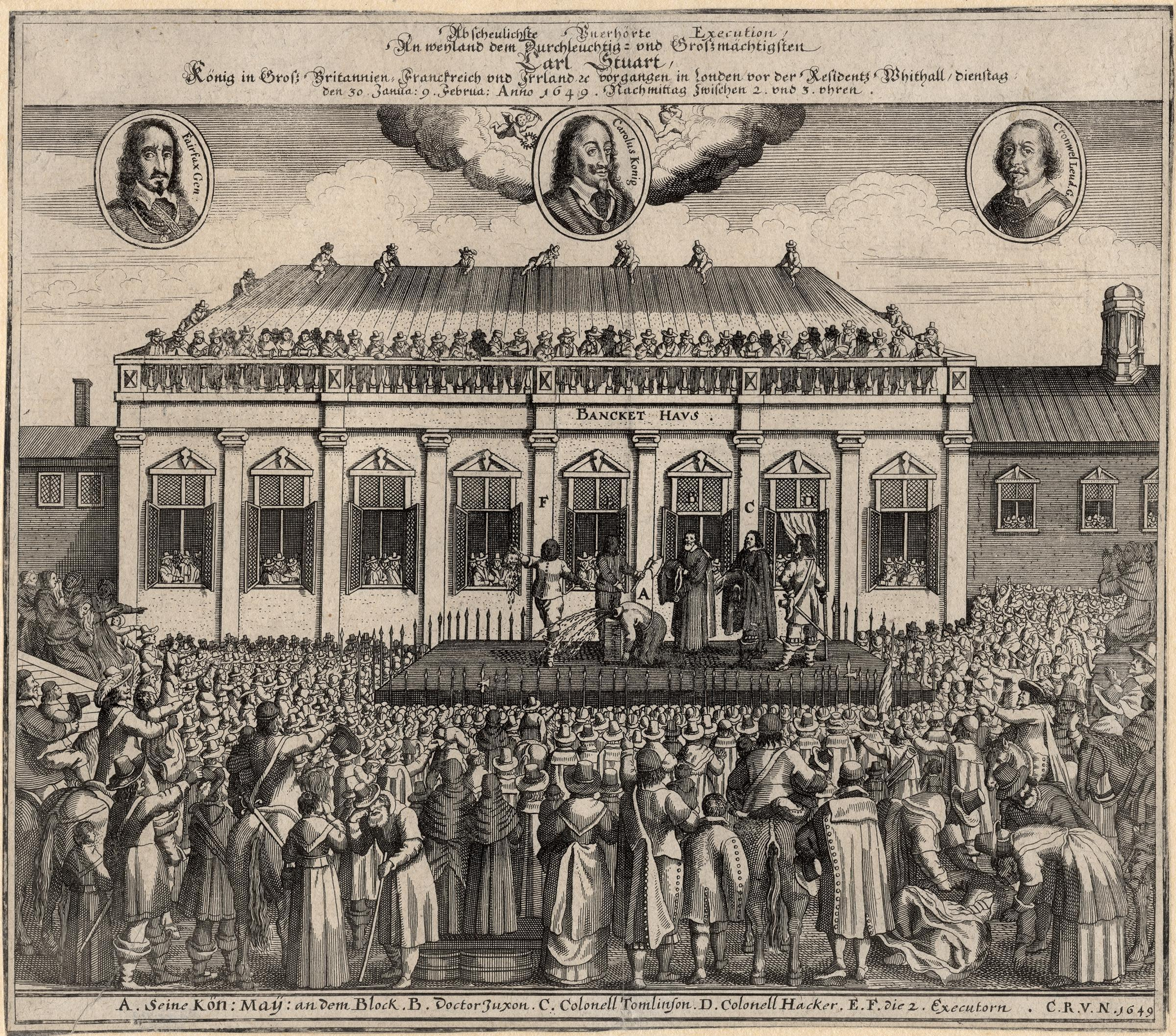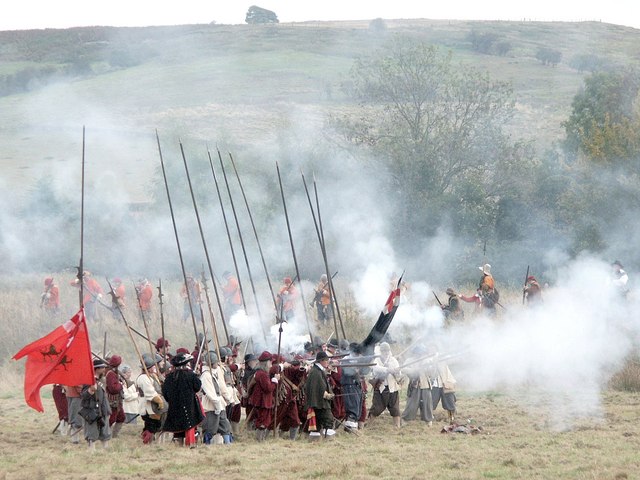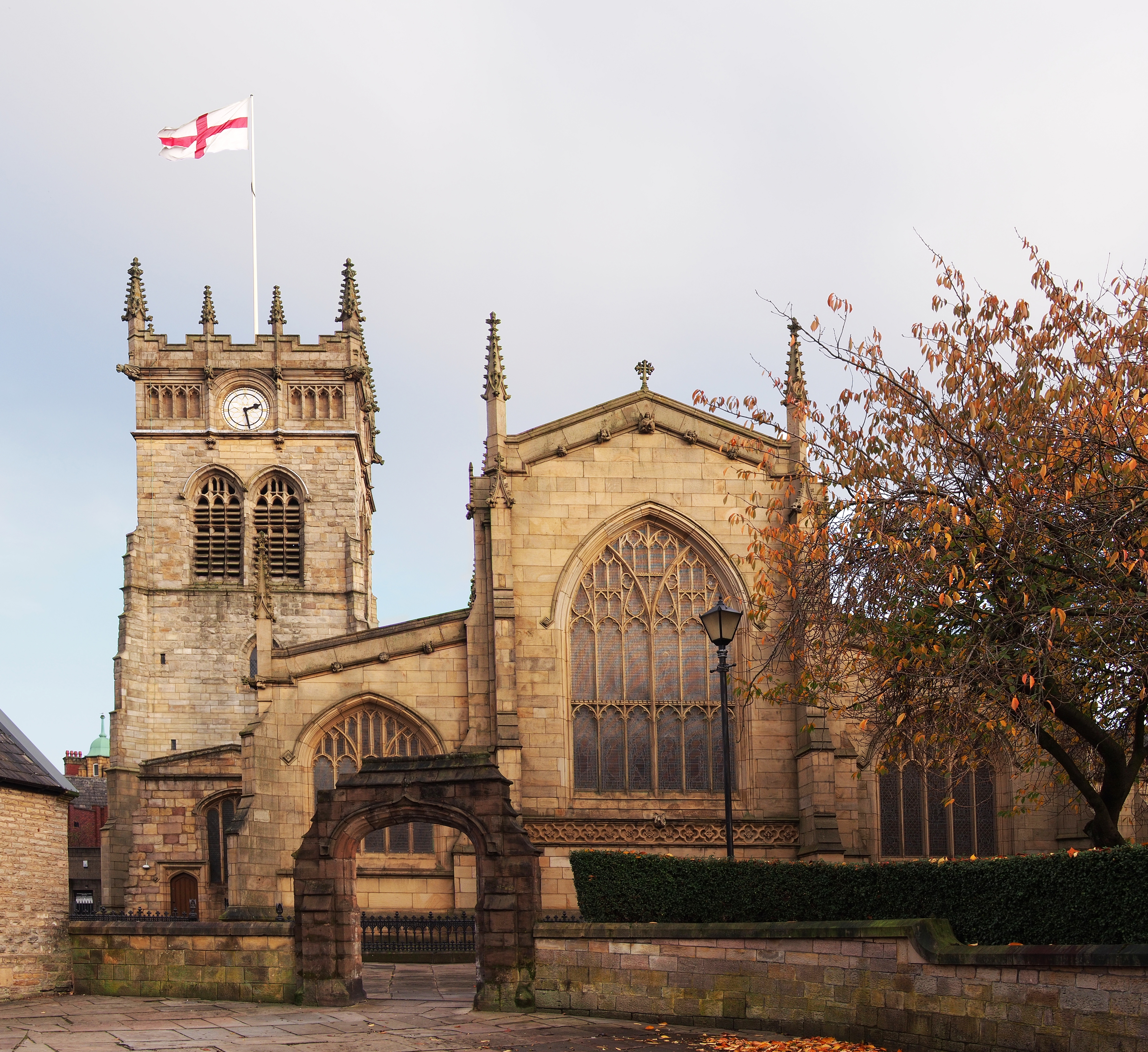|
Scottish Invasion Of England (1648)
A Scottish invasion of England took place near Carlisle on 8 July 1648 as part of the Second English Civil War. The First English Civil War between Royalist supporters of Charles I and an alliance of Parliamentarian and Scottish forces had ended in 1646 with Charles defeated and imprisoned. He continued to negotiate with several factions among his opponents and this sparked the Second English Civil War in 1648. It began with a series of mutinies and Royalist uprisings in England and Wales. A Scottish faction which supported Charles, known as the Engagers, raised an army under the command of James Hamilton, Duke of Hamilton. This marched south to support the uprisings; crossing into England it combined with English Royalists under Marmaduke Langdale and continued along the west coast road some 24,000 strong. Much smaller Parliamentarian forces commanded by Major General John Lambert fell back in front of it. Lieutenant General Oliver Cromwell concentrated 9,000 men in no ... [...More Info...] [...Related Items...] OR: [Wikipedia] [Google] [Baidu] |
Second English Civil War
The Second English Civil War took place between February and August 1648 in Kingdom of England, England and Wales. It forms part of the series of conflicts known collectively as the 1639–1653 Wars of the Three Kingdoms, which include the 1641–1653 Irish Confederate Wars, the 1639–1640 Bishops' Wars, and the 1649–1653 Cromwellian conquest of Ireland. Following his defeat in the First English Civil War, in May 1646 Charles I of England, Charles I surrendered to the Scots Covenanters, rather than Parliament of England, Parliament. By doing so, he hoped to exploit divisions between English and Scots Presbyterian polity, Presbyterians, and English Independent (religion), Independents. At this stage, all parties expected Charles to continue as king, which combined with their internal divisions, allowed him to refuse significant concessions. When the Presbyterian majority in Parliament failed to disband the New Model Army in late 1647, many joined with the Scottish Engagers in ... [...More Info...] [...Related Items...] OR: [Wikipedia] [Google] [Baidu] |
Pennines
The Pennines (), also known as the Pennine Chain or Pennine Hills, are a range of highland, uplands mainly located in Northern England. Commonly described as the "Vertebral column, backbone of England" because of its length and position, the range runs from Derbyshire and Staffordshire in the North Midlands, north of the Midlands to Northumberland in North East England. From the River Tyne, Tyne Gap in the north, the range extends south through the North Pennines, Yorkshire Dales, South Pennines, and Peak District to end near the valley of the River Trent. The Border Moors & Forests, Border Moors and Cheviot Hills, which lie beyond the Tyne Gap, are included in some definitions of the range. The range is divided into two by the Aire Gap, a wide pass formed by the valleys of the rivers River Aire, Aire and River Ribble, Ribble. There are several Spur (topography), spurs off the main Pennine range east into Greater Manchester and Lancashire, comprising the Rossendale Valley, Rosse ... [...More Info...] [...Related Items...] OR: [Wikipedia] [Google] [Baidu] |
Commonwealth Of England
The Commonwealth of England was the political structure during the period from 1649 to 1660 when Kingdom of England, England and Wales, later along with Kingdom of Ireland, Ireland and Kingdom of Scotland, Scotland, were governed as a republic after the end of the Second English Civil War and the High Court of Justice for the trial of Charles I, trial and execution of Charles I. The republic's existence was declared through "An Act declaring England to be a Commonwealth", adopted by the Rump Parliament on 19 May 1649. Power in the early Commonwealth was vested primarily in the Parliament and a English Council of State, Council of State. During the period, fighting continued, particularly in Ireland and Scotland, between the parliamentary forces and those opposed to them, in the Cromwellian conquest of Ireland and the Anglo-Scottish war of 1650–1652. In 1653, after dissolution of the Rump Parliament, the Army Council (1647), Army Council adopted the Instrument of Gover ... [...More Info...] [...Related Items...] OR: [Wikipedia] [Google] [Baidu] |
Execution Of Charles I
Charles_I_of_England, Charles I, King of Kingdom of England, England, Kingdom of Scotland, Scotland, and Kingdom of Ireland, Ireland, was executed on Tuesday, 30 January 1649 outside the Banqueting House on Whitehall, London. The execution was the culmination of political and military conflicts between the cavaliers, royalists and the roundheads, parliamentarians in England during the English Civil War, leading to Charles's capture and Trial of Charles I, trial. On Saturday 27 January 1649, the parliamentarian High Court of Justice for the trial of King Charles I, High Court of Justice had declared Charles guilty of attempting to "uphold in himself an unlimited and tyrannical power to rule according to his will, and to overthrow the rights and liberties of the people" and sentenced him to death by beheading. Charles spent his last few days in St James's Palace, accompanied by his most loyal subjects and visited by his family. On 30 January, he was taken to a large black gallows, ... [...More Info...] [...Related Items...] OR: [Wikipedia] [Google] [Baidu] |
Uttoxeter
Uttoxeter ( , ) is a market town and civil parish in the East Staffordshire borough of Staffordshire, England. It is near to the Derbyshire county border. The town is from Burton upon Trent via the A50 and the A38, from Stafford via the A518, from Stoke-on-Trent via the A50, and from Derby via the A50 and the A38, and north-east of Rugeley via the A518 and the B5013. The population was 14,014 at the 2021 Census. The town's literary connections include Samuel Johnson and Mary Howitt. History Uttoxeter's name has been spelt at least 79 ways since it appeared in the Domesday Book of 1086 as "Wotocheshede": it probably came from Anglo-Saxon ''Wuttuceshǣddre'', meaning "Wuttuc's homestead on the heath". Some historians have pointed to pre- Roman settlement here; axes from the Bronze Age discovered in the town are now on display in the Potteries Museum in Stoke-on-Trent. It is possible that Uttoxeter was the location of some form of Roman activity, due to its strategic p ... [...More Info...] [...Related Items...] OR: [Wikipedia] [Google] [Baidu] |
Flanking Maneuver
In military tactics, a flanking maneuver is a movement of an armed force around an enemy force's side, or flank, to achieve an advantageous position over it. Flanking is useful because a force's fighting strength is typically concentrated in its front, therefore, to circumvent an opposing force's front and attack its flank is to concentrate one's own offense in the area where the enemy is least able to concentrate defense. Flanking can also occur at the operational and strategic levels of warfare. Tactical flanking The flanking maneuver is a basic military tactic with several variations. Flanking an enemy entails attacking from one or more sides, at an angle to the enemy's direction of engagement. There are three standard flanking maneuvers. The first maneuver is the ambush, where a unit performs a surprise attack from a concealed position. Units friendly to the ambushing unit may be hidden to the sides of the ambush site to surround the enemy, but care must be taken ... [...More Info...] [...Related Items...] OR: [Wikipedia] [Google] [Baidu] |
Battle Of Winwick
The Battle of Winwick (also known as the Battle of Red Bank) was fought on 19 August 1648 near the Lancashire village of Winwick between part of a Royalist army under Lieutenant General William Baillie and a Parliamentarian army commanded by Lieutenant General Oliver Cromwell. The Royalists were defeated with all of those who took part in the fighting, their army's entire infantry force, either killed or captured. The Royalist mounted component fled but surrendered five days after the battle. Winwick was the last battle of the Second English Civil War. The First English Civil War between Royalist supporters of Charles I and an alliance of Parliamentarian and Scottish forces ended in 1646 with Charles defeated and a prisoner. He continued to negotiate with several factions among his opponents and this sparked the Second English Civil War in 1648: a series of mutinies and Royalist uprisings in England and Wales, and a Scottish Royalist invasion of north-west England. The ... [...More Info...] [...Related Items...] OR: [Wikipedia] [Google] [Baidu] |
Gunpowder
Gunpowder, also commonly known as black powder to distinguish it from modern smokeless powder, is the earliest known chemical explosive. It consists of a mixture of sulfur, charcoal (which is mostly carbon), and potassium nitrate, potassium nitrate (saltpeter). The sulfur and charcoal act as fuels while the saltpeter is an oxidizer. Gunpowder has been widely used as a propellant in firearms, artillery, rocketry, and pyrotechnics, including use as a blasting agent for explosives in quarrying, mining, building Pipeline transport, pipelines, tunnels, and road#Construction, roads. Gunpowder is classified as a Explosive#Low, low explosive because of its relatively slow decomposition rate, low ignition temperature and consequently low brisance, brisance (breaking/shattering). Low explosives deflagration, deflagrate (i.e., burn at subsonic speeds), whereas high explosives detonation, detonate, producing a supersonic shockwave. Ignition of gunpowder packed behind a projectile generates ... [...More Info...] [...Related Items...] OR: [Wikipedia] [Google] [Baidu] |
Wigan
Wigan ( ) is a town in Greater Manchester, England. The town is midway between the two cities of Manchester, to the south-east, and Liverpool, to the south-west. It is the largest settlement in the Metropolitan Borough of Wigan and is its administrative centre. The town has a population of 107,732 and the wider borough of 330,714. Wigan is part of the Historic counties of England, historic county of Lancashire. Wigan was in the territory of the Brigantes, an ancient List of ancient Celtic peoples and tribes, Celtic tribe that ruled much of what is now Northern England. The Brigantes were subjugated in the Roman conquest of Britain and the Roman settlement of was established where Wigan lies. Wigan was incorporated as a Borough status in the United Kingdom, borough in 1246, following the issue of a charter by Henry III of England, King Henry III of England. At the end of the Middle Ages, it was one of four boroughs in Lancashire established by royal charter. The Industrial Re ... [...More Info...] [...Related Items...] OR: [Wikipedia] [Google] [Baidu] |
River Ribble
The River Ribble runs through North Yorkshire and Lancashire in Northern England. It starts close to the Ribblehead Viaduct in North Yorkshire, and is one of the few that start in the Yorkshire Dales and flow westwards towards the Irish Sea (the Dee in Dentdale and the Twiss in Kingsdale being notable others). Etymology The name ''Ribble'' may be a Brittonic compound-formation. The second element is the noun ''*pol'', with connotations including "puddle, pond, upland-stream" ( Welsh ''pwll''). The first is ''rö-'', an intensive prefix, with nouns meaning "great" (Welsh ''rhy-'', Cornish re-). Ribble may once have been known as ''*Bremetonā-'', underlying the name ''Bremetenacum'', the Roman fort at Ribchester. Involved here is the Brittonic root ''*breμ–'', meaning "roaring" (cf. Welsh ''brefu''), as observed at the river-names Breamish in Northumberland, Braan in Scotland and Brefi in Wales. History Neolithic to Saxon finds from along the River Ribble during th ... [...More Info...] [...Related Items...] OR: [Wikipedia] [Google] [Baidu] |
Rout
A rout is a Panic, panicked, disorderly and Military discipline, undisciplined withdrawal (military), retreat of troops from a battlefield, following a collapse in a given unit's discipline, command authority, unit cohesion and combat morale (''esprit de corps''). History Historically, lightly equipped soldiers such as light cavalry, auxiliaries, partisan (military), partisans or militia were important when pursuing a fast-moving, defeated enemy force and could often keep up the pursuit into the following day, causing the routed army heavy casualties or total dissolution. The slower-moving heavy forces could then either seize objectives or pursue at leisure. However, with the advent of armoured warfare and ''blitzkrieg'' style operations, an enemy army could be kept more or less in a routed or disorganized state for days or weeks on end. In modern times, a routed formation will often cause a complete breakdown in the entire front, enabling the organized foe to attain a quick ... [...More Info...] [...Related Items...] OR: [Wikipedia] [Google] [Baidu] |
Battle Of Preston (1648)
The battle of Preston was fought on 17 August 1648 during the Second English Civil War. A Roundhead, Parliamentarian army commanded by Lieutenant-general (United Kingdom), Lieutenant General Oliver Cromwell attacked a considerably larger force of Cavalier, Royalists under James Hamilton, 1st Duke of Hamilton, James Hamilton, Duke of Hamilton, near the Lancashire town of Preston, Lancashire, Preston; the Royalists were defeated with heavy losses. The First English Civil War between Royalist supporters of Charles I of England, Charles I and an alliance of Parliamentarian and Scottish forces ended in 1646 with Charles defeated and imprisoned. He continued to negotiate with several factions among his opponents and this sparked the Second English Civil War in 1648. It began with a series of Mutiny, mutinies and Royalist Rebellion, uprisings in England and Wales. Meanwhile, a political struggle in Scotland led to a faction which supported Charles, known as the Engagers, gaining power. ... [...More Info...] [...Related Items...] OR: [Wikipedia] [Google] [Baidu] |









